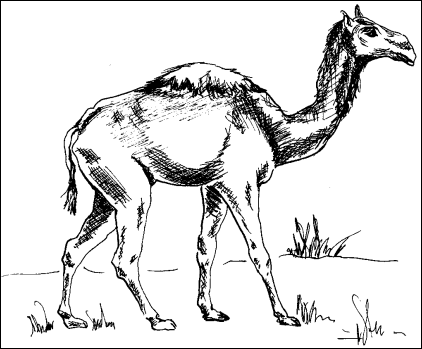

Unlike in the Old World, North American natives had few domesticated animals. Dogs and turkeys were about it. Admittedly, the much greater area of Eurasia and Africa might be part of the reason. An animal domesticated in one place could spread easily throughout. It's interesting to speculate, though, on what might have been the situation in the New World if so many hoofed animals had not become extinct here at the end of the Ice Age.
Until the mass extinction of that time, we had species that were close
relatives of kinds that were successfully domesticated in Eurasia or Africa. A number
of species of horses were common, as were at least a couple kinds of camels. Even
several members of the cattle family were about. Isn't it just possible that had
these extinct forms survived a few more thousands years, into the time when Old
Worlders were beginning animal husbandry, we too might have tamed the wild ones.
Indeed, perhaps invading Spaniards would have found Native Americans traversing our
Chihuahuan region with home-grown ships of the desert.

Contributor: Arthur H. Harris, Laboratory for Environmental Biology, Centennial Museum, University of Texas at El Paso.
Desert Diary is a joint production of the Centennial Museum and KTEP National Public Radio at the University of Texas at El Paso.

Sketch of Camelops, a common late Ice Age North American camel. Sketch by F.E. Schwein.